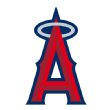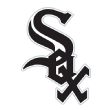The baseball season is one of benchmarks, incremental chapters in what turns into the book of every hardball campaign. With the All-Star Game behind us, we've passed one of those benchmarks and can turn our full attention to the next one: the July 31 trade deadline.
This year, the term "deadline" is not used as loosely as in the past. This season, for the first time in a long while, there is in fact only one deadline, with the waiver-wire transactions of Augusts past no longer possible, thanks to a new agreement between the league and the players' association. There remain some vague avenues for player movement after the end of this month, but for the most part, this is it. Teams must declare themselves over the next three weeks as buyers or sellers, setting themselves up for this October or aiming for Octobers to come.
That's the theme for this month's Stock Watch. We're going to divide the teams into buyers and sellers. For the buyers, we'll identify each club's primary need, then float some possible trade targets. For the sellers, we'll do more of an asset inventory of possibly available big leaguers.
One additional number included that is not normally part of the Stock Watch format is an aggressiveness rating. This is a subjective index of how aggressive teams should be in acquiring players from now until the deadline. A 5 is neutral -- neither buyer nor seller, really. Anything above that denotes a buyer, with 10 being the most aggressive. Below 5 are the sellers, with 1 denoting the teams most desperate to turn present value into future hope.
The middle range -- those teams given a 5 or 6 in aggressiveness rating -- remain in that murky land between buying and selling. This season, with so many teams within a few games of a wild-card spot and just a few games above or below .500, this is a status that can change weekly. For now, this is how the teams stack up, with half the teams designated as buyers and half as sellers.
Note: Teams are grouped as buyers or sellers based on aggressiveness rating, but the ranking before each team is based on current win forecasts generated by rest-of-season simulations.
BUYERS
 1. Los Angeles Dodgers
1. Los Angeles Dodgers
WIN FORECAST: 103.5 | CHANGE FROM JUNE: +5.9
DIVISION%: 99.7 | PLAYOFF%: 100.0
PENNANT%: 45.7 | TITLE%: 26.2
Aggressiveness rating: 10
Big need: Middle relief
Whom could they target? Edwin Diaz, Ken Giles, Felipe Vazquez
The Dodgers have close to a perfect roster, leaving them with the luxury of targeting the reliever they need. That would be Vazquez, the ultimate late-inning lefty partner for Kenley Jansen.
 2. New York Yankees
2. New York Yankees
WIN FORECAST: 101.0 | CHANGE FROM JUNE: +4.7
DIVISION%: 84.0 | PLAYOFF%: 98.1
PENNANT%: 27.0 | TITLE%: 14.7
Aggressiveness rating: 10
Big need: Pitching depth
Whom could they target? Matthew Boyd, Trevor Bauer, Kirby Yates
The Yankees don't need much but have the prospect surplus to aim high at the best pitchers on the trade market, the type who could make their biggest impact in October.
 3. Houston Astros
3. Houston Astros
WIN FORECAST: 100.3 | CHANGE FROM JUNE: -0.2
DIVISION%: 94.3 | PLAYOFF%: 98.4
PENNANT%: 28.3 | TITLE%: 15.0
Aggressiveness rating: 10
Big need: Postseason starter
Whom could they target? Matthew Boyd, Trevor Bauer, Marcus Stroman
Like the Yankees, once the Astros get healthy, they don't have many roster holes. Another ace-level starter would be ideal, and wouldn't it be just so tasty to have Bauer teamed up with college frenemy Gerrit Cole?
 4. Minnesota Twins
4. Minnesota Twins
WIN FORECAST: 100.0 | CHANGE FROM JUNE: +7.1
DIVISION%: 91.9 | PLAYOFF%: 97.9
PENNANT%: 23.0 | TITLE%: 11.4
Aggressiveness rating: 10
Big need: Middle relief
Whom could they target? Kirby Yates, Will Smith, Ken Giles
The Twins' only soft spot, other than the underbelly of statistical regression, lies in consistent sixth- and seventh-inning options, so even if Minnesota doesn't want to cough up the prospects needed to get the top available firemen, it should be able to bolster the bullpen one way or another.
 5. Tampa Bay Rays
5. Tampa Bay Rays
WIN FORECAST: 93.9 | CHANGE FROM JUNE: -0.7
DIVISION%: 12.9 | PLAYOFF%: 80.3
PENNANT%: 10.8 | TITLE%: 4.9
Aggressiveness rating: 9
Big need: Big righty bat
Whom could they target? Nicholas Castellanos, Jose Abreu, Jorge Soler
The Rays have been desperate for relief help, and that need persists, but perhaps the biggest jolt to their chances to reach October would come from an everyday DH who could help keep the scoreboard turning a little more consistently.
 6. Atlanta Braves
6. Atlanta Braves
WIN FORECAST: 93.6 | CHANGE FROM JUNE: +10.7
DIVISION%: 85.5 | PLAYOFF%: 96.6
PENNANT%: 19.4 | TITLE%: 8.8
Aggressiveness rating: 10
Big need: Veteran pitching
Whom could they target? Zack Greinke, Trevor Bauer, Marcus Stroman
Given Kevin Gausman's struggles and the youth around Dallas Keuchel, another top-level veteran for October makes a lot of sense, and should someone such as Bauer or Greinke become available, no team has the prospect stock to outbid the Braves.
 7. Cleveland Indians
7. Cleveland Indians
WIN FORECAST: 90.2 | CHANGE FROM JUNE: +8.3
DIVISION%: 8.1 | PLAYOFF%: 45.5
PENNANT%: 3.8 | TITLE%: 1.5
Aggressiveness rating: 8
Big need: Righty-hitting second baseman
Whom could they target? Josh Harrison, Ian Kinsler, Jonathan Villar
If the Indians keep playing well and get into what would be a soft buying mode, the easiest spot to upgrade at present appears to be second base, where Jason Kipnis' decline has become apparent. Another righty hitter makes sense as well for a club that has struggled against lefties.
 8. Oakland Athletics
8. Oakland Athletics
WIN FORECAST: 89.1 | CHANGE FROM JUNE: +5.2
DIVISION%: 4.9 | PLAYOFF%: 36.3
PENNANT%: 3.3 | TITLE%: 1.4
Aggressiveness rating: 9
Big need: High-contact middle infielder
Whom could they target? Whit Merrifield, Joe Panik, Miguel Rojas
The Jurickson Profar experiment hasn't worked out thus far, and Oakland has too many competitors for those precious AL wild-card slots to give it much more time. Merrifield would be a godsend for the Athletics' take-and-rake lineup.
 9. Boston Red Sox
9. Boston Red Sox
WIN FORECAST: 88.8 | CHANGE FROM JUNE: -2.4
DIVISION%: 3.1 | PLAYOFF%: 36.1
PENNANT%: 3.3 | TITLE%: 1.5
Aggressiveness rating: 7
Big need: No. 5 starter
Whom could they target? Lance Lynn, Mike Minor, Zack Wheeler
Hopefully the Red Sox will know by the deadline if Nathan Eovaldi can hold down a ninth-inning role, which leaves one more starter as Boston's major need for the second half.
 10. Chicago Cubs
10. Chicago Cubs
WIN FORECAST: 87.6 | CHANGE FROM JUNE: -5.4
DIVISION%: 64.5 | PLAYOFF%: 75.6
PENNANT%: 16.6 | TITLE%: 7.9
Aggressiveness rating: 9
Big need: Lineup balancer
Whom could they target? Whit Merrifield, Joe Panik, Miguel Rojas
Like the A's, the Cubs could use one more consistent offensive threat, and a specific type at that -- someone who can complement Chicago's group of patient and powerful sluggers. Of course, that player could turn out to be Ben Zobrist.
 11. Washington Nationals
11. Washington Nationals
WIN FORECAST: 84.9 | CHANGE FROM JUNE: +5.8
DIVISION%: 9.8 | PLAYOFF%: 48.1
PENNANT%: 4.5 | TITLE%: 1.7
Aggressiveness rating: 8
Big need: High-leverage relief
Whom could they target? Edwin Diaz, Will Smith, Ken Giles
The Nationals' resurgent season demands a bullpen upgrade, a high-leverage righty to pair with Sean Doolittle. Plucking Diaz from the Mets seems unlikely, but Giles would fit the bill as well.
 13. Philadelphia Phillies
13. Philadelphia Phillies
WIN FORECAST: 83.6 | CHANGE FROM JUNE: -2.5
DIVISION%: 4.7 | PLAYOFF%: 35.4
PENNANT%: 2.0 | TITLE%: 0.8
Aggressiveness rating: 7
Big need: Center field
Whom could they target? Kevin Pillar, Jarrod Dyson, Billy Hamilton
The thinking here is that if the Phillies can at least find an everyday center fielder for the second half who is strong defensively, then Scott Kingery can focus on raking as the third baseman, and Maikel Franco can be demoted or traded.
 15. Milwaukee Brewers
15. Milwaukee Brewers
WIN FORECAST: 82.5 | CHANGE FROM JUNE: -4.5
DIVISION%: 14.9 | PLAYOFF%: 28.1
PENNANT%: 2.4 | TITLE%: 0.8
Aggressiveness rating: 8
Big need: Top starter
Whom could they target? Trevor Bauer, Matthew Boyd, Robbie Ray
The Brewers have a lot of pitching needs, but nothing would bring things back into focus more than an ace starter who can roll up both innings and zeroes. Bauer might be out of reach. Another possibility here is Bumgarner.
 16. Colorado Rockies
16. Colorado Rockies
WIN FORECAST: 81.1 | CHANGE FROM JUNE: -0.8
DIVISION%: 0.0 | PLAYOFF%: 18.7
PENNANT%: 1.1 | TITLE%: 0.4
Aggressiveness rating: 7
Big need: Power bat
Whom could they target? Jose Abreu, Jorge Soler, Kyle Schwarber
Any chance the Rockies have of returning to the playoffs hinges on their underachieving rotation getting it together. Even if that happens, Colorado needs another power hitter in a lineup with at least a couple of holes that could accommodate one.
 17. St. Louis Cardinals
17. St. Louis Cardinals
WIN FORECAST: 80.6 | CHANGE FROM JUNE: -4.9
DIVISION%: 9.3 | PLAYOFF%: 19.6
PENNANT%: 1.7 | TITLE%: 0.5
Aggressiveness rating: 7
Big need: Rotation topper
Whom could they target?: Zack Greinke, Trevor Bauer, Madison Bumgarner
The enigmatic Cardinals have been one of baseball's more disappointing clubs, but a top starter might remind us why so many saw the Redbirds as the preseason favorites in the NL Central.
SELLERS
 12. Arizona Diamondbacks
12. Arizona Diamondbacks
WIN FORECAST: 84.6 | CHANGE FROM JUNE: +0.7
DIVISION%: 0.2 | PLAYOFF%: 47.1
PENNANT%: 4.0 | TITLE%: 1.4
Aggressiveness rating: 6
Big chips: SP Zack Greinke, OF David Peralta, C Alex Avila, SP Robbie Ray, RRP Greg Holland
What would they want back? Prospect depth, salary flexibility
In some ways, it might almost be better if Arizona slumps the next couple of weeks, because if tomorrow were July 31, you could flip a coin as to whether the Snakes should buy or sell. If they sell, it would be a tough balancing act to determine how much cash they'd have to eat to move Greinke while getting some kind of future piece in return.
 14. Texas Rangers
14. Texas Rangers
WIN FORECAST: 83.4 | CHANGE FROM JUNE: +3.3
DIVISION%: 0.6 | PLAYOFF%: 6.0
PENNANT%: 0.3 | TITLE%: 0.1
Aggressiveness rating: 6
Big chips: SP Mike Minor, SP Lance Lynn, RRP Jesse Chavez, RRP Shawn Kelley, OF Hunter Pence, INF Logan Forsythe, INF Asdrubal Cabrera
What would they want back? A big bat at first base, an offensive catcher, rotation depth
The Rangers' rotation has been a revelation, but can it last? If it does and Texas looks like a deadline buyer, the top priority should be a big first-base bat such as Jose Abreu or possibly someone such as Justin Smoak.
 18. Los Angeles Angels
18. Los Angeles Angels
WIN FORECAST: 79.9 | CHANGE FROM JUNE: -2.3
DIVISION%: 0.1 | PLAYOFF%: 1.3
PENNANT%: 0.1 | TITLE%: 0.0
Aggressiveness rating: 5
Big chips: OF Kole Calhoun, RRP Hansel Robles, RRP Noe Ramirez, RRP Felix Pena, RRP Cam Bedrosian, SP Matt Harvey, SP Trevor Cahill
What would they want back? Controllable starters, salary flexibility
The death of Tyler Skaggs rocked a team already teetering in terms of its 2019 direction. You have to anticipate a passive approach as the Angels wait for their top prospects to arrive.
 19. Cincinnati Reds
19. Cincinnati Reds
WIN FORECAST: 79.9 | CHANGE FROM JUNE: -7.0
DIVISION%: 7.3 | PLAYOFF%: 16.6
PENNANT%: 2.0 | TITLE%: 0.8
Aggressiveness rating: 6
Big chips: SS Jose Iglesias, RRP David Hernandez, SP Tanner Roark, SP Sonny Gray, OF Yasiel Puig, 2B Scooter Gennett
What would they want back? Catching, middle-infield help, overall depth
With better high-leverage pitching, the Reds might be leading the NL Central. As it is, Cincinnati needs to get hot over the next two weeks; otherwise, its crop of quality free-agents-to-be is going to attract plenty of suitors on the trade market.
 20. Pittsburgh Pirates
20. Pittsburgh Pirates
WIN FORECAST: 78.4 | CHANGE FROM JUNE: +7.2
DIVISION%: 4.0 | PLAYOFF%: 8.7
PENNANT%: 0.4 | TITLE%: 0.1
Aggressiveness rating: 6
Big chips: 2B Adam Frazier, LRP Felipe Vazquez, LRP Francisco Liriano, OF Starling Marte, RRP Richard Rodriguez, OF Corey Dickerson, OF Melky Cabrera, OF Gregory Polanco
What would they want back? A young catcher
We know the Pirates aren't going to go all-in with a splashy move, so a move to acquire a young catcher makes a lot of sense in light of Francisco Cervelli's wise decision to give up the tools of ignorance. A deal built around Vazquez and one of the Dodgers' near-ready catching prospects makes a whole lot of sense for both teams.
 21. San Diego Padres
21. San Diego Padres
WIN FORECAST: 77.2 | CHANGE FROM JUNE: +1.5
DIVISION%: 0.0 | PLAYOFF%: 3.7
PENNANT%: 0.2 | TITLE%: 0.1
Aggressiveness rating: 5
Big chips: LRP Kirby Yates, 2B Ian Kinsler, RRP Craig Stammen, RRP Adam Warren, LRP Aaron Loup
What would they want back? Controllable starters, a center fielder
Kirby Yates, 32, has never been this good, and while he has been perhaps the best reliever in baseball this season, we all know what happens to almost all relief pitchers. The Padres can accomplish something important by dealing Yates at his peak value, whether it's finding a controllable, starting-caliber center fielder or finding a taker for Wil Myers by including some cash and attaching him to Yates.
 22. Chicago White Sox
22. Chicago White Sox
WIN FORECAST: 75.1 | CHANGE FROM JUNE: +4.5
DIVISION%: 0.0 | PLAYOFF%: 0.1
PENNANT%: 0.0 | TITLE%: 0.0
Aggressiveness rating: 4
Big chips: C James McCann, UT Leury Garcia, RRP Alex Colome, LRP Aaron Bummer, RRP Evan Marshall, SP Ivan Nova, LRP Josh Osich, RRP Kelvin Herrera, 1B Jose Abreu
What would they want back? Controllable young veterans, including a big bat and help for the rotation and bullpen
While you can't have too many prospects, the White Sox are close enough that they can float some quality packages for big-league-ready solutions, with starting pitchers being the top priority. In addition to a solid closer in Colome, the White Sox have three decent lefties to dangle in a market that doesn't have many of them.
 23. New York Mets
23. New York Mets
WIN FORECAST: 75.1 | CHANGE FROM JUNE: -6.1
DIVISION%: 0.1 | PLAYOFF%: 1.5
PENNANT%: 0.1 | TITLE%: 0.0
Aggressiveness rating: 4
Big chips: OF Michael Conforto, SP Zack Wheeler, 3B Todd Frazier, SP Jason Vargas, C Wilson Ramos, P Noah Syndergaard, UT J.D. Davis, LRP Justin Wilson, SS Amed Rosario, RRP Edwin Diaz, LRP Luis Avilan
What would they want back? Relievers, prospects, salary flexibility
Whether it's Diaz, Wheeler or even Conforto, if the Mets decide to sell, freeing up future payroll would be nearly as important as adding a semblance of quality to a depleted farm system.
 24. San Francisco Giants
24. San Francisco Giants
WIN FORECAST: 71.8 | CHANGE FROM JUNE: +6.6
DIVISION%: 0.0 | PLAYOFF%: 0.3
PENNANT%: 0.0 | TITLE%: 0.0
Aggressiveness rating: 4
Big chips: 1B/3B Pablo Sandoval, LRP Will Smith, RRP Reyes Moronta, SP Madison Bumgarner, RRP Sam Dyson, LRP Tony Watson, RRP Mark Melancon, 2B Joe Panik
What would they want back? Controllable starters, infielders, outfielders, prospects, salary flexibility
The Giants haven't helped first-year GM Farhan Zaidi's case to sell by overachieving just enough to hang on the fringes of contention. One more hot streak could put him in an awkward spot. If the Giants sell as expected, few teams have more quality options to offer contenders.
 25. Seattle Mariners
25. Seattle Mariners
WIN FORECAST: 70.0 | CHANGE FROM JUNE: -2.8
DIVISION%: 0.0 | PLAYOFF%: 0.0
PENNANT%: 0.0 | TITLE%: 0.0
Aggressiveness rating: 4
Big chips: SP Mike Leake, SP Marco Gonzales, DH Daniel Vogelbach, OF Mitch Haniger, INF Tim Beckham, RRP Roenis Elias, 2B/CF Dee Gordon, RRP Brandon Brennan
What would they want back? Prospects, salary flexibility
The Mariners will just be trying to lower payroll some more while adding organizational depth. But we know they'll do something.
 26. Toronto Blue Jays
26. Toronto Blue Jays
WIN FORECAST: 63.2 | CHANGE FROM JUNE: -5.5
DIVISION%: 0.0 | PLAYOFF%: 0.0
PENNANT%: 0.0 | TITLE%: 0.0
Aggressiveness rating: 3
Big chips: SP Marcus Stroman, SS Freddy Galvis, RRP Ken Giles, 2B Eric Sogard, RRP Daniel Hudson, RRP Sam Gaviglio, RRP Joe Biagini, 1B Justin Smoak, OF Randal Grichuk, UT Brandon Drury, SP Clayton Richard, SP Aaron Sanchez
What would they want back? Prospects
This is a crucial month for a franchise still early-ish in its rebuild that has nonetheless already graduated some high-impact talent to the majors. Toronto has some excellent pieces to sell, and getting near-ready prospects or controllable young veterans to augment the young core would improve the short-term outlook immensely.
 27. Miami Marlins
27. Miami Marlins
WIN FORECAST: 62.2 | CHANGE FROM JUNE: +2.1
DIVISION%: 0.0 | PLAYOFF%: 0.0
PENNANT%: 0.0 | TITLE%: 0.0
Aggressiveness rating: 1
Big chips: SP Caleb Smith, 2B Starlin Castro, INF Martin Prado, OF Curtis Granderson, RRP Sergio Romo, INF Neil Walker, C Bryan Holaday, SS Miguel Rojas, RRP Nick Anderson, RRP Tayron Guerrero, SP Jose Urena
What would they want back? Prospects
Miami's prospect stock is dominated by pitchers, which makes it a nice time to exchange some quality big league arms in an effort to balance things with a little more upside on the position-player side.
 28. Kansas City Royals
28. Kansas City Royals
WIN FORECAST: 61.2 | CHANGE FROM JUNE: -9.6
DIVISION%: 0.0 | PLAYOFF%: 0.0
PENNANT%: 0.0 | TITLE%: 0.0
Aggressiveness rating: 2
Big chips: UT Whit Merrifield, OF Alex Gordon, SP Danny Duffy, SP Homer Bailey, RRP Ian Kennedy, CF Billy Hamilton, OF Jorge Soler
What would they want back? Prospects
The Royals love Merrifield, but as they say in the writing game, sometimes you have to kill your darlings. Merrifield is Kansas City's best trade chip, and his value will never be higher. This team needs options for 2022, not 2019.
 29. Detroit Tigers
29. Detroit Tigers
WIN FORECAST: 55.7 | CHANGE FROM JUNE: -6.4
DIVISION%: 0.0 | PLAYOFF%: 0.0
PENNANT%: 0.0 | TITLE%: 0.0
Aggressiveness rating: 2
Big chips: SP Michael Fulmer (injured), SS Jordy Mercer, OF Nicholas Castellanos, SP Matthew Boyd, RRP Shane Greene, SP Daniel Norris, UT Niko Goodrum, RRP Buck Farmer, LRP Blaine Hardy, OF JaCoby Jones, RRP Joe Jimenez, LRP Daniel Stumpf
What would they want back? Prospects.
Who would have thought that Matthew Boyd would turn into one of this deadline's most coveted arms? That's the kind of break you need during a rebuild, but the Tigers need to capitalize on their good fortune now.
 30. Baltimore Orioles
30. Baltimore Orioles
WIN FORECAST: 53.7 | CHANGE FROM JUNE: -7.6
DIVISION%: 0.0 | PLAYOFF%: 0.0
PENNANT%: 0.0 | TITLE%: 0.0
Aggressiveness rating: 1
Big chips: SP John Means, SP Andrew Cashner, SP Dylan Bundy, 2B Jonathan Villar, UT Hanser Alberto, C Pedro Severino, 1B/OF Trey Mancini, RRP Shawn Armstrong, RRP Mychal Givens
What would they want back? Prospects
The Orioles don't have much to offer from their big league roster, but any combination of these players for any group of midlevel or better prospects makes sense. Building up the pipeline is the top objective in Baltimore.
